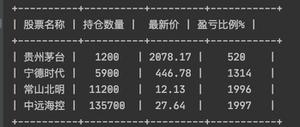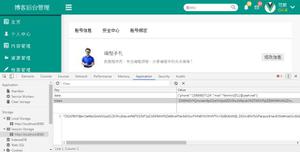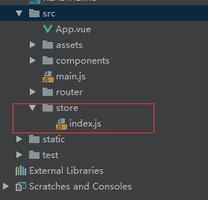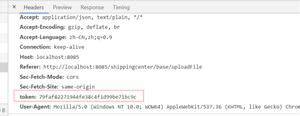Python标准库tokenize对Python代码使用的标记解析器

源码: Lib/tokenize.py
tokenize 模块为 Python 源代码提供了一个词法扫描器,用 Python 实现。该模块中的扫描器也将注释作为标记返回,这使得它对于实现“漂亮的输出器”非常有用,包括用于屏幕显示的着色器。
为了简化标记流的处理,所有的 运算符 和 定界符 以及 Ellipsis 返回时都会打上通用的 OP 标记。 可以通过 tokenize.tokenize() 返回的 named tuple 对象的 exact_type 属性来获得确切的标记类型。
对输入进行解析标记¶
主要的入口是一个 generator:
tokenize.tokenize(readline)¶生成器
tokenize()需要一个 readline 参数,这个参数必须是一个可调用对象,且能提供与文件对象的io.IOBase.readline()方法相同的接口。每次调用这个函数都要 返回字节类型输入的一行数据。The generator produces 5-tuples with these members: the token type; the
token string; a 2-tuple
(srow,scol)of ints specifying the row andcolumn where the token begins in the source; a 2-tuple
(erow,ecol)ofints specifying the row and column where the token ends in the source; and
the line on which the token was found. The line passed (the last tuple item)
is the logical line; continuation lines are included. The 5 tuple is
returned as a named tuple with the field names:
typestringstartendline.返回的 named tuple 有一个额外的属性,名为
exact_type,包含了OP标记的确切操作符类型。 对于所有其他标记类型,exact_type等于命名元组的type字段。在 3.1 版更改: 增加了对 named tuple 的支持。
在 3.3 版更改: 添加了对
exact_type的支持。根据:pep:263 ,
tokenize()通过寻找 UTF-8 BOM 或编码 cookie 来确定文件的源编码。
所有来自 token 模块的常量也可从 tokenize 导出。
提供了另一个函数来逆转标记化过程。这对于创建对脚本进行标记、修改标记流并写回修改后脚本的工具很有用。
tokenize.untokenize(iterable)¶将令牌转换为 Python 源代码。 iterable 必须返回至少有两个元素的序列,即令牌类型和令牌字符串。任何额外的序列元素都会被忽略。
重构的脚本以单个字符串的形式返回。 结果被保证为标记回与输入相匹配,因此转换是无损的,并保证来回操作。 该保证只适用于标记类型和标记字符串,因为标记之间的间距(列位置)可能会改变。
It returns bytes, encoded using the
ENCODINGtoken, whichis the first token sequence output by
tokenize().
tokenize() 需要检测它所标记源文件的编码。它用来做这件事的函数是可用的:
tokenize.detect_encoding(readline)¶detect_encoding()函数用于检测解码 Python 源文件时应使用的编码。它需要一个参数, readline ,与tokenize()生成器的使用方式相同。它最多调用 readline 两次,并返回所使用的编码(作为一个字符串)和它所读入的任何行(不是从字节解码的)的 list 。
它从 UTF-8 BOM 或编码 cookie 的存在中检测编码,如 PEP 263 所指明的。 如果 BOM 和 cookie 都存在,但不一致,将会引发
SyntaxError。 请注意,如果找到 BOM ,将返回'utf-8-sig'作为编码格式。如果没有指定编码,那么将返回默认的
'utf-8'编码.使用
open()来打开 Python 源文件:它使用detect_encoding()来检测文件编码。
tokenize.open(filename)¶使用由
detect_encoding()检测到的编码,以只读模式打开一个文件。3.2 新版功能.
exception
tokenize.TokenError¶当文件中任何地方没有完成 docstring 或可能被分割成几行的表达式时触发,例如:
"""Beginning of
docstring
或者:
[1,
2,
3
注意,未封闭的单引号字符串不会导致错误发生。它们被标记为 ERRORTOKEN ,然后是其内容的标记化。
命令行用法¶
3.3 新版功能.
tokenize 模块可以作为一个脚本从命令行执行。这很简单。
python -m tokenize [-e][filename.py]可以接受以下选项:
-h,--help¶显示此帮助信息并退出
-e,--exact¶使用确切的类型显示令牌名称
如果 filename.py 被指定,其内容会被标记到 stdout 。否则,标记化将在 stdin 上执行。
例子¶
脚本改写器的例子,它将 float 文本转换为 Decimal 对象:。
fromtokenizeimporttokenize,untokenize,NUMBER,STRING,NAME,OPfromioimportBytesIO
defdecistmt(s):
"""Substitute Decimals for floats in a string of statements.
>>> from decimal import Decimal
>>> s = 'print(+21.3e-5*-.1234/81.7)'
>>> decistmt(s)
"print (+Decimal ('21.3e-5')*-Decimal ('.1234')/Decimal ('81.7'))"
The format of the exponent is inherited from the platform C library.
Known cases are "e-007" (Windows) and "e-07" (not Windows). Since
we're only showing 12 digits, and the 13th isn't close to 5, the
rest of the output should be platform-independent.
>>> exec(s) #doctest: +ELLIPSIS
-3.21716034272e-0...7
Output from calculations with Decimal should be identical across all
platforms.
>>> exec(decistmt(s))
-3.217160342717258261933904529E-7
"""
result=[]
g=tokenize(BytesIO(s.encode('utf-8')).readline)# tokenize the string
fortoknum,tokval,_,_,_ing:
iftoknum==NUMBERand'.'intokval:# replace NUMBER tokens
result.extend([
(NAME,'Decimal'),
(OP,'('),
(STRING,repr(tokval)),
(OP,')')
])
else:
result.append((toknum,tokval))
returnuntokenize(result).decode('utf-8')
从命令行进行标记化的例子。 脚本:
defsay_hello():print("Hello, World!")
say_hello()
将被标记为以下输出,其中第一列是发现标记的行 / 列坐标范围,第二列是标记的名称,最后一列是标记的值(如果有)。
$ python -m tokenize hello.py0,0-0,0: ENCODING 'utf-8'
1,0-1,3: NAME 'def'
1,4-1,13: NAME 'say_hello'
1,13-1,14: OP '('
1,14-1,15: OP ')'
1,15-1,16: OP ':'
1,16-1,17: NEWLINE '\n'
2,0-2,4: INDENT ' '
2,4-2,9: NAME 'print'
2,9-2,10: OP '('
2,10-2,25: STRING '"Hello, World!"'
2,25-2,26: OP ')'
2,26-2,27: NEWLINE '\n'
3,0-3,1: NL '\n'
4,0-4,0: DEDENT ''
4,0-4,9: NAME 'say_hello'
4,9-4,10: OP '('
4,10-4,11: OP ')'
4,11-4,12: NEWLINE '\n'
5,0-5,0: ENDMARKER ''
可以使用 -e 选项来显示确切的标记类型名称。
$ python -m tokenize -e hello.py0,0-0,0: ENCODING 'utf-8'
1,0-1,3: NAME 'def'
1,4-1,13: NAME 'say_hello'
1,13-1,14: LPAR '('
1,14-1,15: RPAR ')'
1,15-1,16: COLON ':'
1,16-1,17: NEWLINE '\n'
2,0-2,4: INDENT ' '
2,4-2,9: NAME 'print'
2,9-2,10: LPAR '('
2,10-2,25: STRING '"Hello, World!"'
2,25-2,26: RPAR ')'
2,26-2,27: NEWLINE '\n'
3,0-3,1: NL '\n'
4,0-4,0: DEDENT ''
4,0-4,9: NAME 'say_hello'
4,9-4,10: LPAR '('
4,10-4,11: RPAR ')'
4,11-4,12: NEWLINE '\n'
5,0-5,0: ENDMARKER ''
以编程方式对文件进行标记的例子,用 generate_tokens() 读取 unicode 字符串而不是字节:
importtokenizewithtokenize.open('hello.py')asf:
tokens=tokenize.generate_tokens(f.readline)
fortokenintokens:
print(token)
或者通过 tokenize() 直接读取字节数据:
importtokenizewithopen('hello.py','rb')asf:
tokens=tokenize.tokenize(f.readline)
fortokenintokens:
print(token)
以上是 Python标准库tokenize对Python代码使用的标记解析器 的全部内容, 来源链接: utcz.com/z/507807.html






